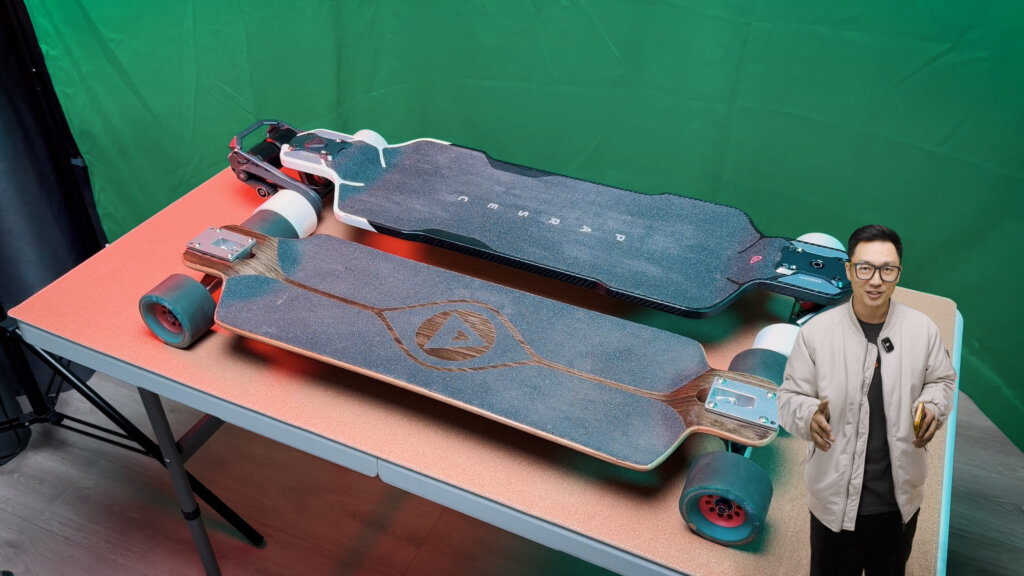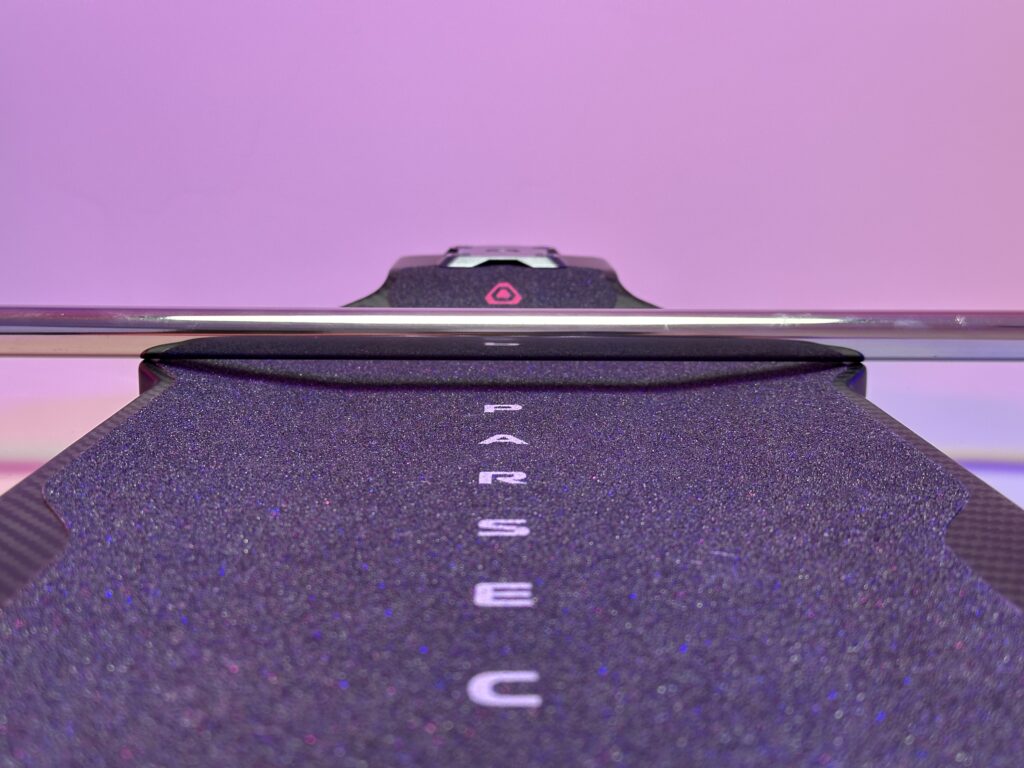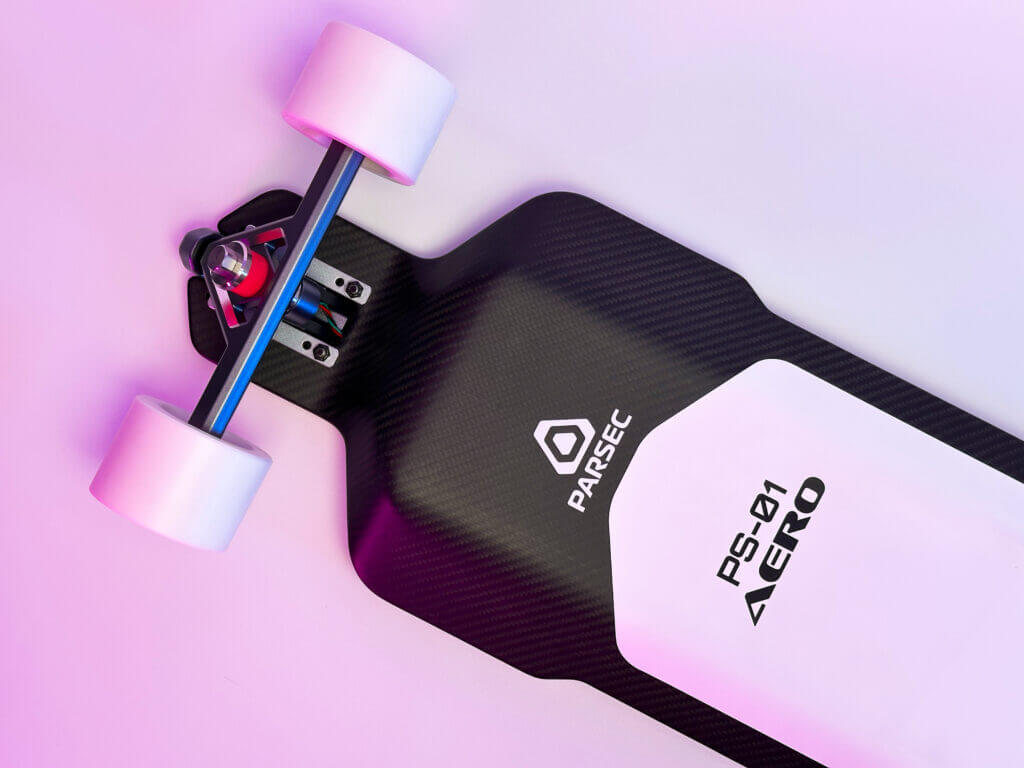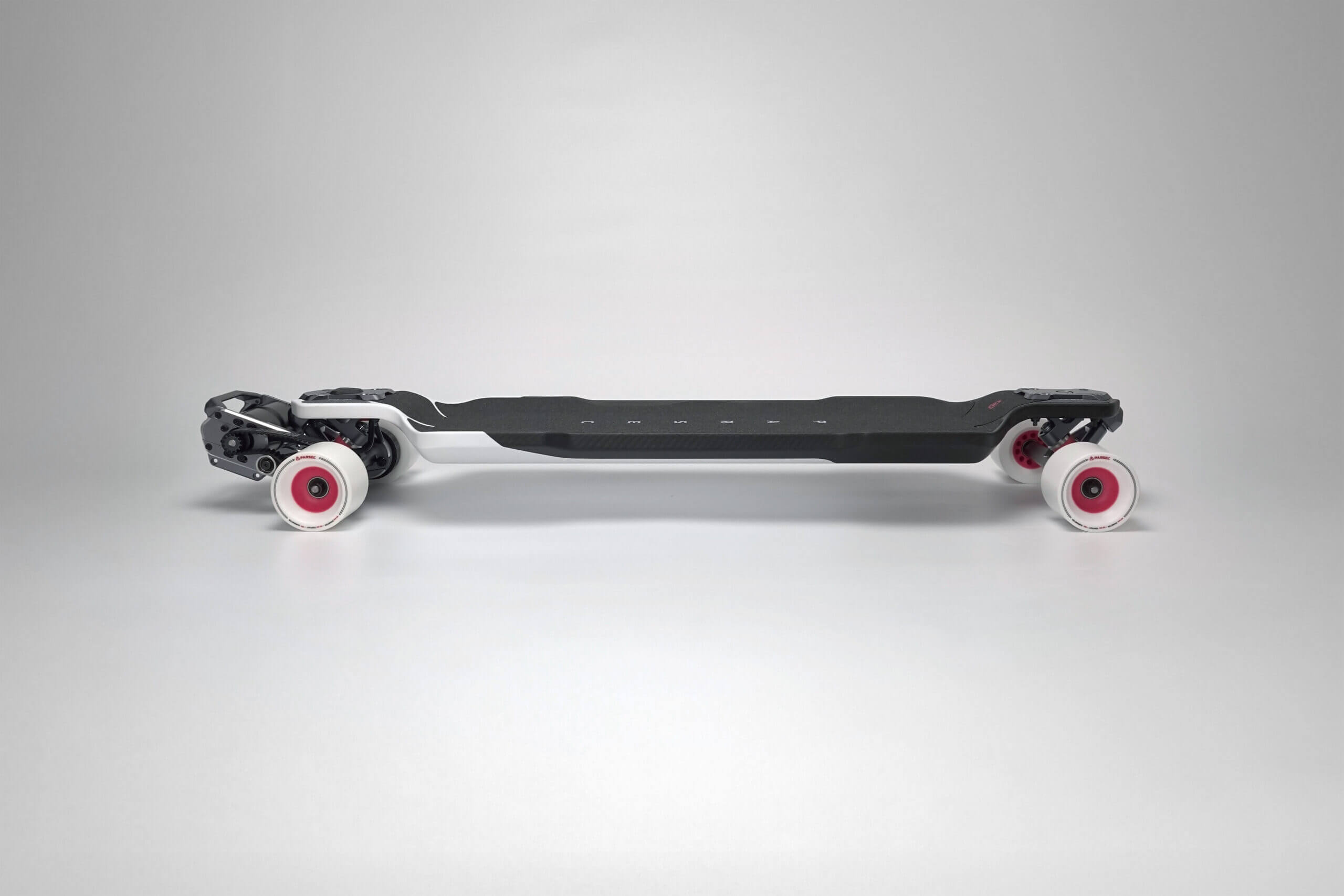Aero Pro’s 34.6-inch (879 mm) deck combines a low ride height with thoughtful design features to deliver a stable, comfortable, yet maneuverable ride. Made from high-grade T800 carbon fiber, it is both lightweight and durable, built to withstand the challenges of everyday city riding.
Low Ride Height
The deck’s deep drops bring the right height to a low 3.35 inches (85 mm) with stock wheels, about the same as the legendary Landyachtz Evo on 73mm Hawgs. For comparison, most electric skateboards have a ride height of around 4.75 to 6.0 inches (120 to 150 mm)—far taller than most analog longboards.
Aero Pro’s low ride height brings several benefits.

Stability: The low center of mass makes the board less sensitive to your movements and easier to control. This greatly lowers the learning curve for beginners and makes the ride more relaxing for any rider.
Foot Positioning: The drops at the nose and tail act as natural foot-stops. No need to look down to know exactly where your feet are positioned. They also help keep your feet in place for improved control when needed.
Wheel Options: The narrow nose and tail allow for a wide selection of wheels with virtually no risk of wheelbite. Most wheels with diameters from 80 to 120 millimeters are compatible.
True Hybrid Use: The low ride height, paired with Aero’s E.P.I.C. Drivetrain, makes pushing and foot-braking far easier than on other electric skateboards. Yes, even easier than most boards using hub motors.
Control with Comfort
Combined with the low ride height, the deck’s width and concave contribute to Aero Pro’s design as a city commuter.
At 10.2 inches wide, the deck shares a similar width with several popular wide double-drop longboards. For context, most analog longboards are around 8 to 10 inches wide, while e-boards can go up to around 11 inches. Some riders with larger feet may prefer wider decks, but ultimately it comes down to personal preference and riding style.

However, width alone doesn’t guarantee good ergonomics. Many electric skateboard decks have a standing area that’s entirely flat, except for the raised edges, to accommodate their battery packs at the cost of steering leverage.
For the Aero Pro, which needs to handle sharp turns in city environments, we prioritized steering leverage without compromising stability. While the deck width spans 10.2 inches, the flat center is just under 4 inches (100 mm)—about the width of an average adult foot. This provides stability during pushing and foot-braking when your front foot is pointed forward, but is also narrow enough to allow even a slightly angled foot to engage the concave for steering.
Additionally, the large-radius concave is designed to be comfortable for feet of all sizes, free of any uncomfortable pointy edges.
Light yet Durable
Made of T800 carbon fiber, the Aero Pro’s deck-enclosure monocoque is built to withstand the harshest conditions of everyday street riding while weighing a mere 2.56 lb (1.16 kg).
T800 fiber costs about twice as much or more than T700 and lower-grade fibers, but enables the deck to be over 40% lighter for the same strength. As far as I know, no other e-board deck today uses such a high-grade fiber.

To test durability, we’ve tossed these decks off buildings, driven over them, given them a good pounding in the lab, and ridden thousands of kilometers with countless curb slams. No deck is indestructible, but these are remarkably strong!
In a static deformation limit test, the deck didn’t snap until reaching 1746 pounds (792.6 kg) of force across its center.

